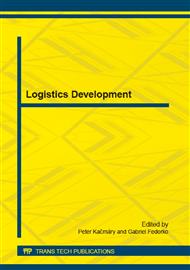p.263
p.271
p.276
p.282
p.288
p.294
p.300
p.306
p.312
Codification as Part of Knowledge Management in Research Projects in the Field of Metallurgy
Abstract:
Increasing requirements in the field of quality and management standards are the reason why knowledge management is regarded as an upcoming need for the metal processing industry. To fully benefit from the organisational achievements which are knowledge resources, and to meet the expectations of customers, one should think about functional, but also modern, computer system that allows the integration of heterogeneous sources of knowledge. The article describes practical aspects of the codification of metallurgical knowledge for the needs of a system of knowledge integration operating in industrial plants. The article propose successive steps to create objects of knowledge and requirements imposed onto the knowledge engineers. The presented methodology is consistent with the standards of knowledge management in the field of codification, and is based on the latest achievements of information science in the field of formal representation of knowledge.
Info:
Periodical:
Pages:
288-293
Citation:
Online since:
December 2014
Price:
Сopyright:
© 2015 Trans Tech Publications Ltd. All Rights Reserved
Share:
Citation:


